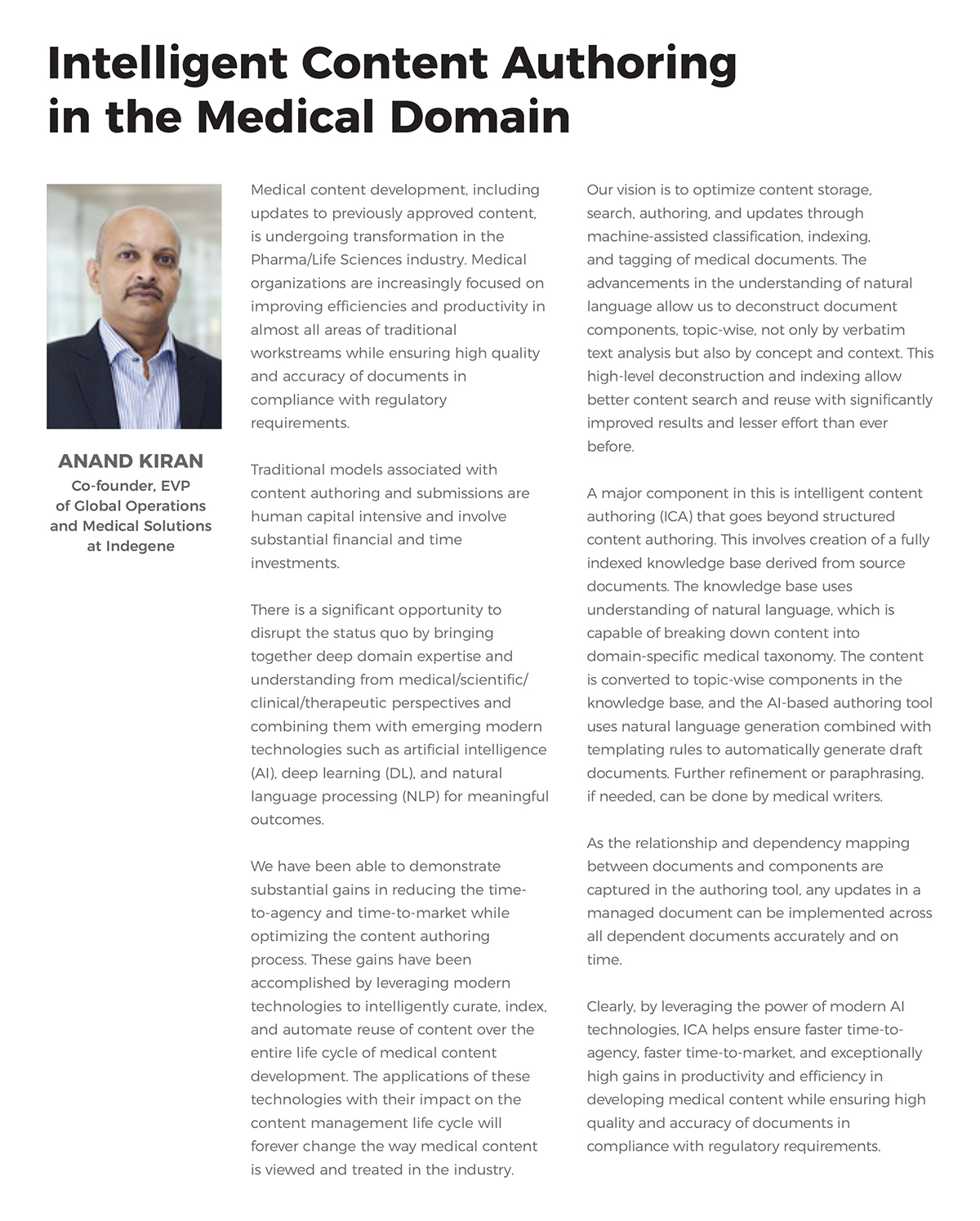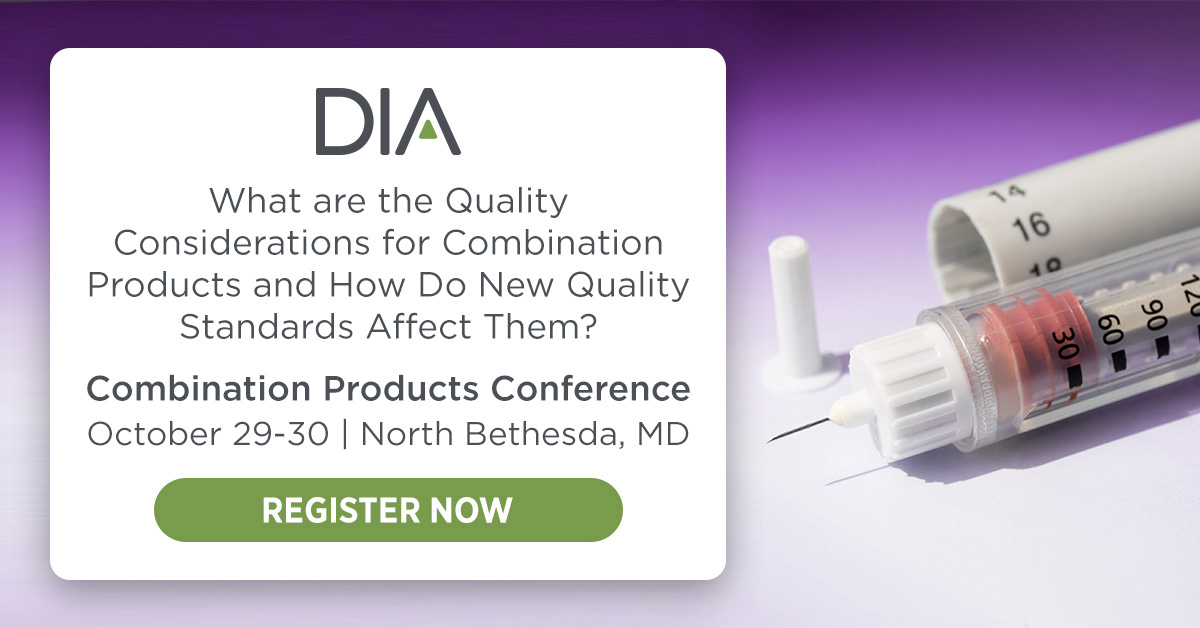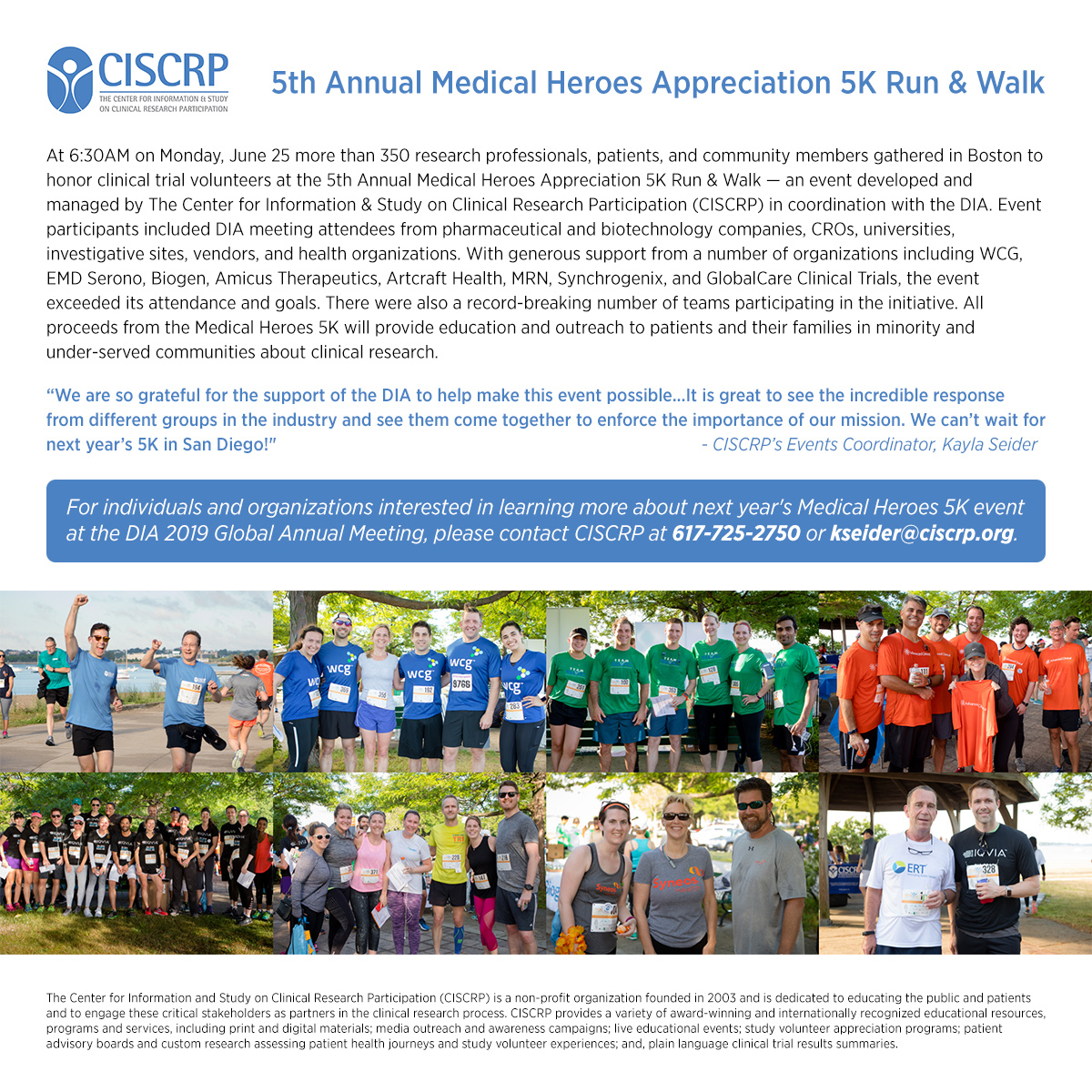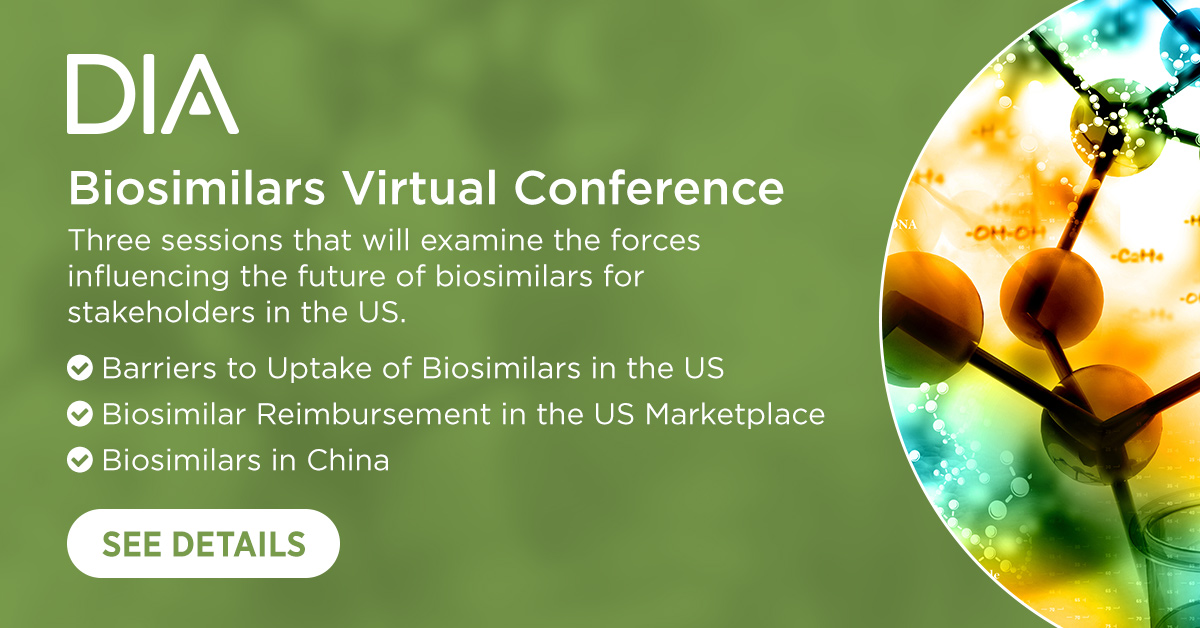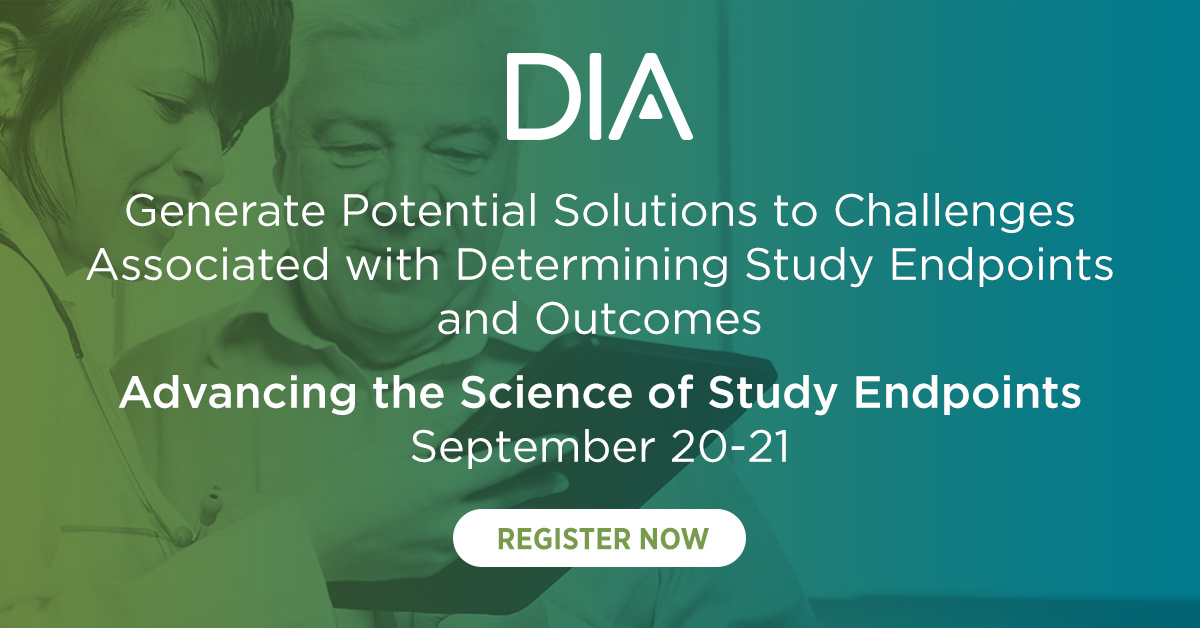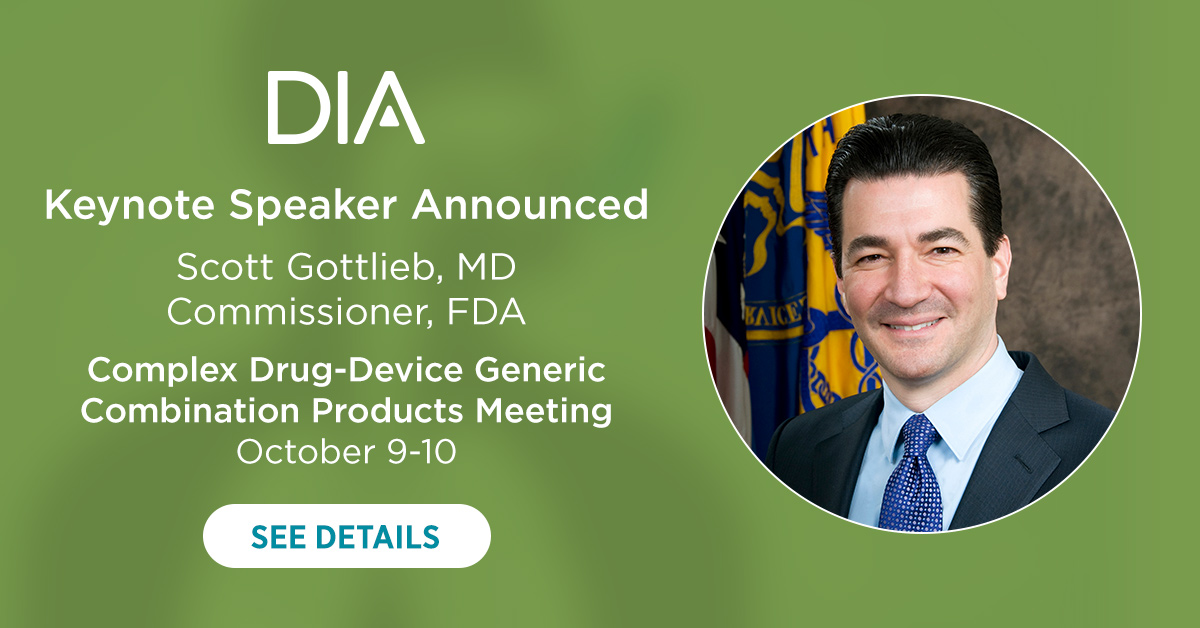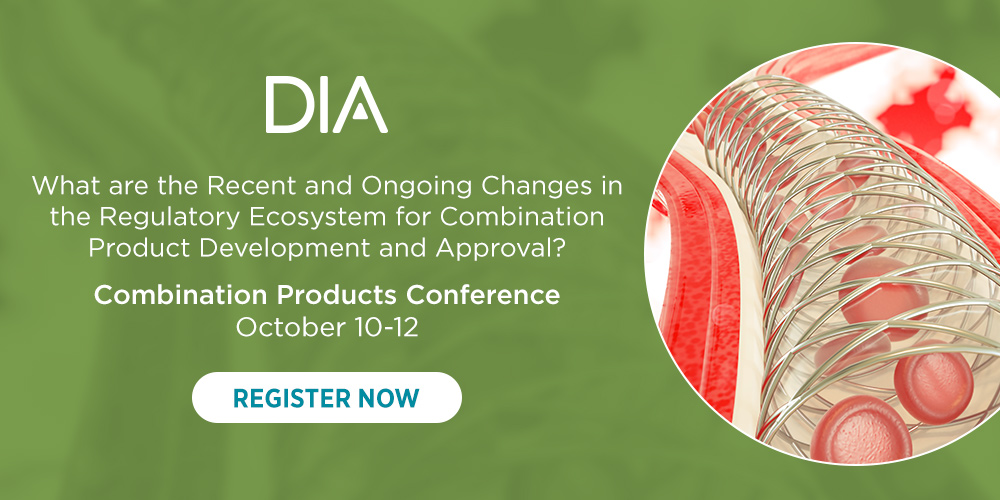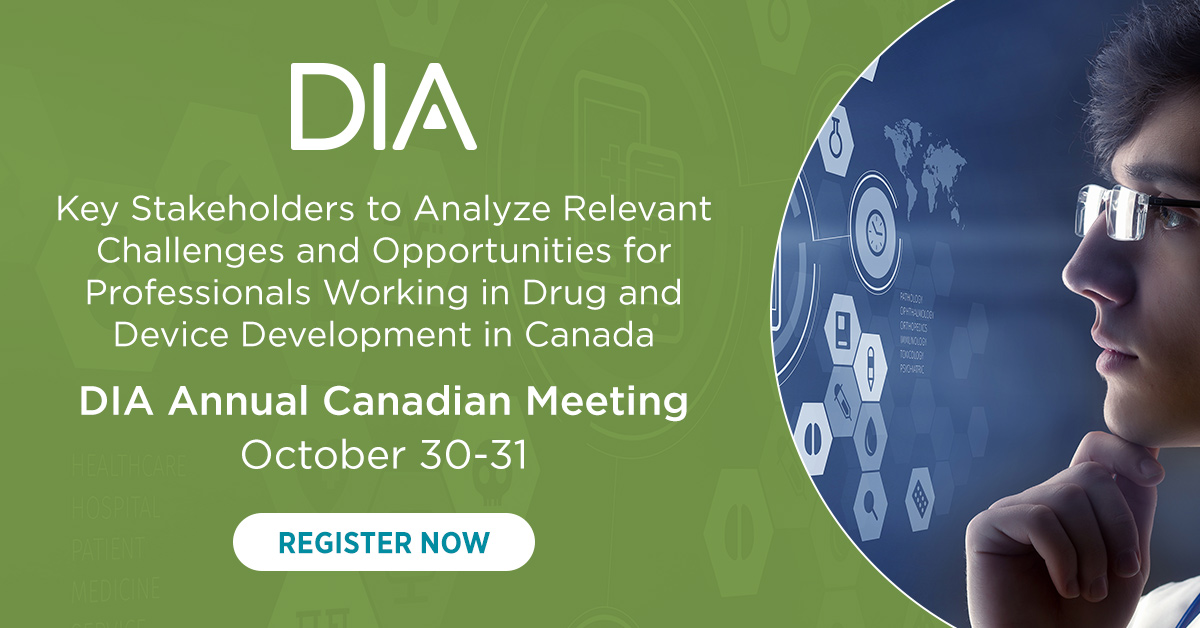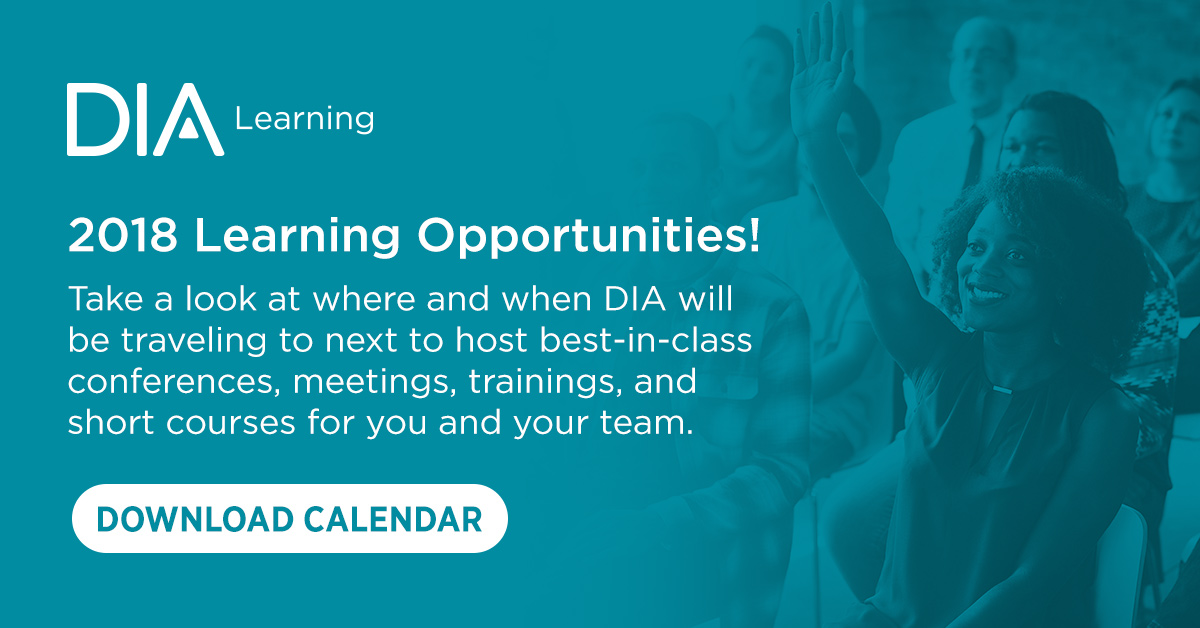August 2018 Global Forum
Table of Contents
EXECUTIVE LEADERSHIP
Subscribe
Love Global Forum‘s new online format? Subscribe today and never miss an issue.
Executive Leadership | Editor’s Message
August 2018
Going Visual
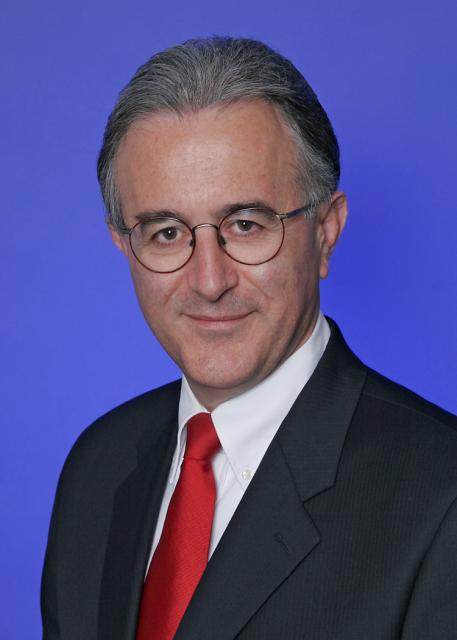
Alberto Grignolo
Editor
Global Forum
Fellow of DIA
his month, enhance your reading experience via video interviews with key opinion leaders. These interviews are integrated into and complement articles in this issue summarizing sessions at the recent DIA 2018 Global Annual Meeting in Boston. Don’t miss this one-of-a-kind opportunity to hear directly from the experts.
These interviews were conducted at the DIA 2018 Global Annual Meeting in Boston in June and included conversations with regulators, industry experts, academics, students, and, importantly, a young patient and his family who were keen to help others understand the regulatory and clinical trial process from the patient’s point of view.
Collectively, and with the accompanying articles on many additional topics, these conversations reflect some of the major themes and takeaways from this year’s DIA Global Annual Meeting, ranging from innovation to real world evidence, value-based assessment and contracting, biosimilar interchangeability, precision medicine, gene editing, EMA and FDA Town Halls, and pediatric trials. Additional video interviews will be posted in the weeks and months ahead, along with upcoming new podcast interviews that thousands of you have grown used to listening to/downloading over the years.
Editorial Board
Content stream editors
Translational science
Gary Kelloff US National Institutes of Health
David Parkinson ESSA Pharma, Inc.
regulatory science
Yoshiaki Uyama Pharmaceuticals and Medical Devices Agency (PMDA)
Adora Ndu BioMarin Pharmaceutical, Inc.
Patient engagement
Deborah Collyar Patient Advocates In Research (PAIR)
Lode Dewulf Servier
Value & access
Edith Frénoy European Federation of Pharmaceutical Industries and Associations (EFPIA)
Sean Tunis Center for Medical Technology Policy (CMTP)
Editorial Staff
Alberto Grignolo, Editor PAREXEL International
Ranjini Prithviraj, Senior Managing Editor, Associate Director DIA Publications
Sandra Blumenrath, Science Writer DIA Publications
Chris M. Slawecki, Senior Digital Copyeditor DIA Publications
Regional Editors
AFRICA
David Mukanga Bill and Melinda Gates Foundation
ASEAN
Silke Vogel Duke-National University of Singapore Graduate Medical School
AUSTRALIA/NEW ZEALAND
Richard Day University of New South Wales, Medicine, St Vincent’s Hospital
CANADA
Judith Glennie JL Glennie Consulting, Inc.
Megan Bettle Health Canada
CENTRAL AND SOUTH AMERICA
Jaime Oliveira Bayer S/A
CHINA
Ling Su Shenyang Pharmaceutical University, Lilly Asia Ventures
EUROPE
John Lisman Lisman Legal Life Sciences
INDIA
J. Vijay Venkatraman Oviya MedSafe
JAPAN
Junichi Nishino Novartis
US
Ann Meeker-O’Connell IQVIA
DIA Membership
Bringing together stakeholders for the betterment of global health care.
Proceedings: DIA 2018 Global Annual Meeting
Proceedings: DIA 2018 Global Annual Meeting

This is the Time and Place to HEAL
Keynote Address
Chris M. Slawecki
DIA Senior Digital Copy Editor
he three-piece performance art company Blue Man Group started the DIA 2018 Opening Plenary with an audio-visual industrial serenade before escorting DIA Global Chief Executive Barbara Lopez Kunz onstage. “If I was anywhere else, I’d say that’s a tough act to follow,” she laughed. Barbara explained that the same principles of innovation, neutrality, diversity, and community upon which Blue Man Group was founded are also foundational pillars for the growth of DIA. “We bring these characteristics to life in the work we do every day,” she said.
After DIA Board Jay Roberts and Chair-Elect Joseph Scheeren jointly introduced videos honoring DIA’s 2018 Global Inspire Award winners, our DIA 2018 Honorary Co-Chairs were introduced by Sudip Parikh, Senior VP and Managing Director, DIA Americas: Regulatory Co-Chair Dr. Tatsuya Kondo, Chief Executive of the PMDA, Japan; and Industry Co-Chair Dr. Julie Gerberding, Executive Vice President and Chief Patient Officer, Strategic Communications, Global Public Policy, and Population Health, at Merck & Co., Inc.
Proceedings: DIA 2018 Global Annual Meeting

Chris M. Slawecki
DIA Senior Digital Copy Editor
hrough his writing on the FDA Voice blog and numerous public remarks and speeches, FDA Commissioner Dr. Scott Gottlieb has made his ambitions clear: more modernization and innovation in clinical research, drug development, and regulatory review and approval, to significantly reduce the clinical impact and cost burden of disease for healthcare systems and patients. In the DIAmond session “Analyzing Innovations Progress in the Gottlieb Era,” experts from the realms of regulatory affairs, venture capital and industry discussed the Commissioner’s impact on, and new opportunities for, industry-agency collaboration in the development and regulation of innovative new therapies.
Key Takeaways
Key focus areas of Commissioner Gottlieb’s modernization efforts:
- Improving FDA’s efficiency by reorganizing the Office of New Drugs (OND) to centralize project management functions and processes.
- Pushing boundaries of FDA’s oversight scope into cell therapies, opioids, and drug costs (the latter “indirectly” by driving more rapid FDA reviews and approvals of generic drugs).
- Ensuring sufficient FDA resources through Congressional appropriations and improving employee recruitment and retention.
- Facilitating and streamlining medical product development by promoting innovative clinical trial approaches and designs, and by expanding partner and pilot programs such as the Center for Devices & Radiological Health’s (CDRH’s) Digital Health Innovation Action Plan in anticipation of emerging technologies.
Proceedings: DIA 2018 Global Annual Meeting

The Fight Against Antimicrobial Resistance:
International Regulatory Convergence
Sandra Blumenrath
DIA Science Writer
ntimicrobial resistance (AMR) has become a serious global health concern. It is estimated that worldwide, between 2015 and 2050, roughly 10 million people will have died of infections caused by resistant bacteria. In addition to the health threat, the direct and indirect economic damage from AMR could amount to an annual loss in global GDP similar to the loss during the 2008 global financial crisis, according to the 2017 World Bank Report.
The “International Regulatory Convergence” DIAmond session brought together representatives from the European Medicines Agency (EMA), the US Food and Drug Administration (FDA), the Japanese Pharmaceuticals and Medical Devices Agency (PMDA), and Health Canada to discuss how regulatory agencies seek to set strategic goals and priorities for various collaborative regulatory initiatives addressing AMR. Each panel member outlined important initiatives that are on their agency’s agenda for the next two years as well as efforts to seek collaborations at an international level.
Key Takeaways
- Regulatory agencies can and should play a primary role in increasing AMR awareness and in promoting surveillance, coordination, and cooperation across geographies.
- All four regulatory agencies coordinate their research activities through various international initiatives, including efforts such as the Trans-Atlantic Task Force on Antimicrobial Resistance (TATFAR), tripartite EMA-FDA-PDMA meetings, bilateral EMA-FDA initiatives as well as cooperations with WHO (including PAHO), OIE, and Codex Alimentarius.
- Each country is also engaged in various regional initiatives that are focused on supporting R&D and streamlining the development of new antibacterial agents as well as their prudent use.
- The panel suggested “Push” and “Pull” incentives as a potential new business model to incentivize pharmaceutical industries to invest in the development of new antimicrobial agents.
![]() Videos
Videos
White Paper
Intelligent Content Authoring in the Medical Domain
Proceedings: DIA 2018 Global Annual Meeting

Triple-A RWE:
Adequate Data, Appropriate Study Designs, and Actionable Evidence
Sandra Blumenrath
DIA Science Writer
he last several years have seen increasing efforts to better understand when and how real world data (RWD) and evidence (RWE) could better support a wide range of regulatory decisions. And recent legislation in the US, such as the Prescription Drug User Fee Act VI and the 21st Century Cures Act, includes provisions that require the FDA to explore further uses of RWE and its potential value within the regulatory framework. At the DIAmond session “Triple-A RWE: Adequate Data, Appropriate Study Designs, and Actionable Evidence,” representatives from research institutions, industry, and FDA discussed guiding principles regarding the selection of adequate RWD sources and appropriate study designs within the regulatory context.
Key Takeaways
- RWE provides an opportunity for fast data collection on a broad patient population to identify new indications and rare adverse effects, define standard of care, support label expansion, and to better understand efficacy. The use of RWE is also needed in some orphan diseases where randomized controlled trials (RCTs) are neither practical nor ethical.
- RWD includes information on various endpoints that are meaningful to patients but may not be collected in clinical trials (CTs), such as health status or longer-term endpoints.
- The biggest challenge is to overcome long-held biases and to reach scientific consensus on reliable, high quality RWD appropriate for regulatory approval, and ways to curate data from various sources.
- Current initiatives, such as the FDA’s Sentinel System, the Duke Margolis Center’s new RWE Framework as well as various pilot projects, can reduce uncertainties and provide frameworks for the use of RWE.
- For now, RWD and RWE are best used in support of CTs to complement clinical findings.
Proceedings: DIA 2018 Global Annual Meeting

Patients as Partners:
Global Perspectives on Patient Engagement
Debra Michaels
DIA Senior Scientist
he meaning of true patient engagement quickly emerges as a requisite “level setting” before discussing where various regions of the world find themselves on the continuum of meaningful patient involvement in therapeutic product development. “Global Perspectives on Patient Engagement” convened a multi-stakeholder panel to discuss factors that have contributed to or hindered the advancement of patient engagement in regions outside the US and Europe.
Key Takeaways
- Early patient advocates in the US and Europe have helped establish a global understanding that true patient engagement goes beyond active involvement of patients as clinical trial participants.
- This understanding is shifting from the concept of “patients at the center” of drug development to the concept of “patients as partners throughout” development, approval, and access.
- Though much progress continues to be made, every stakeholder in every region can work to improve meaningful engagement of patients in drug development:
- Patients must become educated about the therapeutic development and approval processes in order to practice leadership in decision and policy making discussions.
- Physicians/healthcare providers must shift the patient-provider dynamic to encourage the patient’s active voice in their own care.
- Industry must develop and adopt systems, processes, and policies that support best patient engagement practices.
- Regulators must provide clarity about acceptable ways to engage patients, and which patient data are suitable for what purpose, in regulatory review and approval.
Proceedings: DIA 2018 Global Annual Meeting

The Future of PharmaTech and How to Harness AI
Sandra Blumenrath
DIA Science Writer
ew technologies, such as AI, blockchain, cloud computing, and “the internet of things,” are leaving their footprint on the entire healthcare ecosystem. Pharmaceutical and biotech companies have taken on these innovative technologies to provide solutions at various steps throughout the product lifecycle – from discovery and clinical trials to manufacturing, regulatory approval, pharmacovigilance, and market access. This new trend of applying technology to various R&D processes is generally referred to as “PharmaTech.”
Speakers at the “Future of PharmaTech” DIAmond session examined the concept of PharmaTech and how innovative technologies in drug development, such as artificial intelligence, are impacting the pharmaceutical and biotech industry today.
Key Takeaways
- The Massachusetts Institute of Technology (MIT) is collaborating with representatives from the pharma industry to move from “wearables” to “invisibles” using wireless signals.
- Within the pharma industry, there are attempts to use innovative technologies in diagnostics, therapeutics, and the discovery of new biomarkers as well as to generate reliable real word evidence.
- For regulators, new technologies like cloud computing and blockchain offer opportunities not only for speedier reviews, but also for increased case-by-case flexibility, collaborations that rely on exchanging information in real time, and accepting and processing many different types of real world data.
- Overall, PharmaTech enables us to focus on patient outcomes and think about how healthcare and clinical trials can be brought to the patient’s home.
- Work is needed to create a landscape view of the various technologies that companies are using and experimenting with to help us learn which technologies can or cannot be used in certain contexts.
Proceedings: DIA 2018 Global Annual Meeting

Optimising Value-Based Contracting:
Are the Stakeholders Ready to Collaborate?
Inka Heikkinen
DIA Senior Scientist
alue- or outcomes-based contracting (contracts with clinical outcomes related clauses or other arrangements to share the risk) with regard to medicines is quickly becoming a trend when it comes to specialty drugs. Consuming already almost 50 percent of the total budget, specialty drug payment models need quick action to make the system sustainable and affordable, while still rewarding innovation. To move away from the convenient fee-for-service model and discount-driven contracting models, the stakeholders need to agree and align on how to ensure that value is delivered.
The DIAmond session “Value-Based Assessment and Contracting: What Needs to be Done to Make it a Best Practice?” highlighted elements that determine value and their impact on contracting practices, administrative challenges for implementing innovative contracting models, and the value of emerging technologies to enable better outcomes assessment.
Key Takeaways
- All stakeholders (providers, physicians, patients, PBMs, industry, and academics) need to be involved in the discussion and agree to make changes at their end.
- Current infrastructure should be utilized for the new models but new innovations and capabilities should be invested in to allow for collecting outcomes more accurately and efficiently.
- Expenses should be considered holistically instead of dividing pharmaceutical and medical treatment budgets into separate entities, because the outcomes are interlinked.
- New payment models, fit for curative or one-time fees, are needed as innovative technologies, such as gene therapies, become more prevalent.
Proceedings: DIA 2018 Global Annual Meeting

Precision Medicine, Gene Therapy, and Gene Editing:
Forging Ahead with Care
Hozanna Ngoh
Medical Writer, Centre of Regulatory Excellence, Duke-NUS Medical School
ove fast but don’t break things” – to reword a famous motto behind disruptive digital technologies – lightly sums up the conversations that took place at the DIAmond session “Precision Medicine, Gene Editing, and Gene Therapy: Current Status and Regulatory Challenges of Integrating Genetic Medicine into Clinical Care.” The dialogue featured a diverse panel representing scientists, clinicians, government regulators, industry, and patient advocates, who shared their perspectives on the steady momentum of the fast-developing field of precision medicine, multiple challenges facing all stakeholders, and emerging opportunities as the field continues to evolve.
Key Takeaways
- Precision medicine, including gene therapy and gene editing technology, is rapidly advancing across the health landscape, as reflected in the growing research community, an expanding market, and increased public awareness and acceptance of gene editing technologies.
- At the same time, experts agree on the need to be cautious – not only in ensuring the safety and efficacy of health technologies, but also in taking measured steps to address various concerns raised by the myriad of voices across stakeholder groups.
- Stakeholders are working to strike a balance between ensuring the safety and quality of gene therapies and providing affordable access to patients in a timely and sustainable manner.
Proceedings: DIA 2018 Global Annual Meeting

EMA/FDA Question Time
Chris M. Slawecki
DIA Senior Digital Copy Editor
MA and FDA work together, for patients in their own jurisdictions and around the world, through a unique bilateral cooperative framework. The “EMA/FDA Question Time” DIAmond session gave leadership from these agencies the opportunity to present their current projects in four key areas, and gave attendees the opportunity to ask them questions about these projects. This session was hosted by Tânia Teixeira, who serves as EMA Liaison Official to the FDA; and by Sandra Kweder, FDA Liaison to the EMA. “We’re embedded in each other’s agencies to further this communication and collaboration,” Kweder explained. “My job is to explain you – explain us – to Europe, and Tania does the same thing [to the US].”
Key Takeaways
- Legal confidentiality agreements allow both agencies to work with non-public information provided in confidence, share non-public pre-decision information, and share draft guidances and/or legislation.
- Most of their collaboration comes through working groups, or “clusters”:
- Current cluster topics include advanced therapies/regenerative medicine, biosimilars, API inspections, preclinical oncology, and pharmacogenomics.
- Some clusters are very involved in the development of specific product types, such as biomarkers, orphan medicines, and pediatric medicines.
- Multinational clusters include Health Canada, PMDA, SwissMedic, and/or other regulatory bodies.
- Product evaluation and surveillance are a large part of their joint charter: Their joint GCP inspection initiative allows for collaborative GCP inspections and sharing inspection information; their 2017 Mutual Recognition Agreement allows them to share GMP surveillance inspection data.
- Each agency’s increased focus on early engagement in development planning often leads to the recommendation that the sponsor seek parallel EMA-FDA scientific advice.
- When EMA and FDA reach different conclusions, they discuss these differences and why they have occurred.
Proceedings: DIA 2018 Global Annual Meeting

FDA Town Hall
Chris M. Slawecki
DIA Senior Digital Copy Editor
ndustry professionals work under the guidance and jurisdiction of the US FDA’s Centers for Evaluation & Research for Drugs (CDER) and for Biologics (CBER) every day of the year. But on one special day, DIA Annual Meeting attendees get to hear directly from these Centers’ executive leadership, and pose their own questions to them. This year’s “FDA Town Hall,” the traditional DIA Global Annual Meeting closing DIAmond session, was particularly lively and engaging. After each panelist made their own summary presentation, they engaged in a dynamic and at times humorous question and answer session with the audience.
Proceedings: DIA 2018 Global Annual Meeting

Utilizing Real World Data: A PMDA Perspective
Yoshiaki Uyama
Director, Office of Medical
Informatics and Epidemiology,
Pharmaceuticals and Medical
Devices Agency
or some time, regulatory agencies have explored safety surveillance methods using real world data (RWD) and conducted real world studies of post-marketing safety concerns to inform regulatory decisions. The session “Regulators’ Utilization of Real World Data in Pharmacovigilance Activities” focused on the approach of the US Food and Drug Administration (FDA), European Medicines Agency (EMA), Health Canada, and Japan’s Pharmaceuticals and Medical Devices Agency (PMDA) as well as the challenges faced in exploring new methods and in designing and conducting these studies. The panelists also discussed future areas of research, including opportunities for international collaborative research. This article summarizes the key takeaways from the perspective of PMDA.
Key Takeaways
- PMDA has utilized RWD for drug safety assessment since 2009.
- Recently, Japanese regulations were updated, including a publication of guidelines, for promoting RWD utilization by pharmaceutical industries in pharmacovigilance. (Available here in Japanese only.)
- Several challenges have been identified in utilizing RWD for regulatory purposes, including data quality, data coding, deep understanding about databases, validation of clinical outcomes and system infrastructure, timely and continuous communication with marketing authorization holders (MAH), and active collaborations among all stakeholders.
- Continuous sharing regarding experiences and knowledge among regulatory agencies and other stakeholders will be necessary to recognize common challenges toward international harmonization in utilizing RWD in the regulatory process.
Proceedings: DIA 2018 Global Annual Meeting

New Ways to Incorporate Patient Engagement into Drug Development and Healthcare Delivery
Deborah Collyar
President, Patient Advocates In Research (PAIR)
ore than 20 sessions at the DIA 2018 Global Annual Meeting in Boston focused on patient engagement or the patient perspective. Two sessions, in particular, covered traditional areas that are not normally included in discussions about how to incorporate patient voices into operations: “A Hot Debate: Perspectives on Benefit and Risk from Patients Across Diseases” and “Patient Engagement in Pharmacovigilance.”
Key Takeaways
Patient-focused benefit/risk communication:
- Trust must be established before any information about managing risk will have an impact with patients and their providers.
- Communication strategies must keep pace with constantly changing environments and concerns, and take real patient issues into account.
- There are patient-focused regulatory tools from both EMA and FDA, as well as an international patient preference model, that trial sponsors can use to learn directly from patients.
Patient-focused pharmacovigilance efforts:
- Use Health Literacy (HL) principles for all patient materials to ensure safety information is accurate, accessible, and actionable.
- Use communication models that incorporate and combine multiple evidence-based fields together for better patient outcomes.
- Real World Data and Public Hearings complement regulatory efforts to review safety data.
Proceedings: DIA 2018 Global Annual Meeting

What to Ask Depends on Who You Ask: Measuring the Impact of Patient Engagement
Roslyn Schneider
Global Patient Affairs Lead, Pfizer
Ellen Coleman
President and CEO, MK&A
Mary Murray
Associate Director, Diversity and Patient Engagement in Clinical Operations, Bristol-Myers Squibb
Suzanne Schrandt
Director, Patient Engagement, Arthritis Foundation
his Global Annual Meeting session attracted attendees from industry (68 percent), the patient community (21 percent), academia (5 percent), and health authorities/government (5 percent). Beginning with a poll of all attendees, the session revealed diverse views of what people mean by patient engagement and the related outcomes or metrics people are seeking. Among the most frequent keywords were time, enrollment, patient, satisfaction, retention, burden, and clarity.
In this session, stakeholders discussed their perspectives on the outcomes they expect from patient engagement and what types of measures can effectively capture achievement. A case study evaluating the impact of a patient engagement effort from the dual perspectives of patient satisfaction and clinical development was also examined.
Key Takeaways
- The recently released Patient Engagement Quality Guidance from Patient Focused Medicines Development helps stakeholders plan, develop, and assess the quality of patient engagement activities throughout the development and lifecycle of medicines.
- A case study conducted by MK&A and Grünenthal put forward a set of suggested company and patients metrics (detailed below) that measure the impact of patient engagement.
- Other incentive could include integrating gratitude via a quality framework or adjusting structures, roles, and processes in an organization to improve technical and/or interpersonal excellence.
- Major challenges remain in evaluating the impact of patients that are engaged as partners and advisors.
Proceedings: DIA 2018 Global Annual Meeting

Central Venous Access Device in a Pediatric Trial: A Case Study of Multi-Stakeholder Engagement for Patient Benefit
Chris M. Slawecki
DIA Senior Digital Copy Editor
he process of amending a pediatric trial protocol elicits numerous ethical, clinical, and regulatory considerations. Where are the challenges in these processes? Are there opportunities for all clinical trial stakeholders, including patients and their parents, to work through these challenges together? “Regulatory and Ethical Considerations with Placebo Administration Using a Central Venous Access Device in a Pediatric Trial” provided answers through its practical process review of one such protocol amendment.
The Study
ESSENCE is a double-blind, multi-center, placebo-controlled 96-week study to evaluate the efficacy and safety of SRP-4045 and SRP-4053 in Duchenne Muscular Dystrophy (DMD) patients with deletion mutations that are amenable to skipping exons 45 or 53. It is relatively long and large for a pediatric rare disease study – “the most rigorous clinical trial in this disease space,” explained the principal investigator.
Proceedings: DIA 2018 Global Annual Meeting

Not Only For Himself But Other Boys: A Mother’s Perspective on Pediatric Clinical Research
“Nicholas was diagnosed with Duchenne Muscular Dystrophy ten years ago. At that time, there was little hope and no clinical trials,” explains Erin Bullers, mother of Nicholas, a patient in the ESSENCE clinical trial. “He participated in natural history studies for several years providing researchers with valuable data but there was no treatment available to him other than corticosteroids. In 2016, Nicholas was accepted into a clinical trial. For the first time since his diagnosis, our family had hope! We felt incredibly blessed to have this opportunity.”
Proceedings: DIA 2018 Global Annual Meeting

Interchangeable Biosimilars: EU and US Experiences and Perspectives
Chris M. Slawecki
DIA Senior Digital Copy Editor
iosimilars are biologic drugs that are approved for marketing in the EU and US after demonstrating therapeutic similarity to an original or innovator biologic product (also known as the reference biologic). A biosimilar product application in the US must include data demonstrating biosimilarity to the reference biologic. These data usually include analytical studies demonstrating that the biosimilar product is highly similar to the reference biologic, animal studies (including toxicity assessment), and data sufficient to demonstrate the safety, purity, and potency of the proposed biosimilar product in one or more of the indications for which the reference biologic is licensed.
Biosimilars are biologic drugs that are approved for marketing in the EU and US after demonstrating therapeutic similarity to an original or innovator biologic product (also known as the reference biologic). A biosimilar product application in the US must include data demonstrating biosimilarity to the reference biologic. These data usually include analytical studies demonstrating that the biosimilar product is highly similar to the reference biologic, animal studies (including toxicity assessment), and data sufficient to demonstrate the safety, purity, and potency of the proposed biosimilar product in one or more of the indications for which the reference biologic is licensed.
A biosimilar product application in the EU must demonstrate through comprehensive comparability studies that their biosimilar is highly similar to the reference biologic and that there are no clinically meaningful differences between the biosimilar and the reference biologic in terms of safety, quality and efficacy.
Because biosimilars avoid repeating clinical trials already conducted on the reference biologic, biosimilars have significantly reduced development timelines and, consequently, cost.
Session Chair Nielsen Hobbs noted in his introduction to Interchangeable Biosimilars: A Global Perspective that, while cost remains the most effective argument for these products in both the US and the EU, projections about how much these products could save the US healthcare system vary widely: The Congressional Budget Office, for example, projects a $25B reduction in direct spending on originator biologics across the 2009 – 2018 decade, while Express Scripts estimates saving ten times that amount, ($250B) in the seven years from 2014 – 2020.
Key Takeaways
- There is a dramatic difference between biosimilar uptake in the EU and in the US: FDA has approved eleven biosimilars to date, but there have been 41 biosimilars approved for use in Europe.
- Price is only one factor in the higher market share for biosimilars in Europe. Other factors include manufacturer reliability, physician comfort and experience with biosimilars, and patient acceptance of biosimilars.
- FDA has defined interchangeability as a standalone designation, but it is applicable only to biosimilars dispensed through retail and/or mail-order pharmacies.
- 41 US states and Puerto Rico have updated state pharmacy laws to allow for the automatic substitution of interchangeable biosimilars; debate remains about when this substitution can occur, and the length of time until the prescribing physician is notified about the substitution.
Proceedings: DIA 2018 Global Annual Meeting

Considering Use of Bring Your Own Device (BYOD) in Clinical Trials
Sarrit Kovacs
Clinical Outcome Assessments (COA) Staff, Office of New Drugs (OND), CDER, FDA
Wen-Hung Chen
COA Staff, OND, CDER, FDA
he panel of stakeholders convened for “Bring Your Own Device ePRO: Hold the Relish, or No Holds Barred?” presented current regulatory views and new evidence on the use of Bring Your Own Device (BYOD) approaches to collect electronic clinical outcome assessment (eCOA) data in clinical trials, and identified unmet areas of future research.
Key Takeaways
- BYOD is an area of active research and consideration by various stakeholders.
- Regulatory requirements for electronic data capture (e.g., US Code of Federal Regulations Title 21 Part 11) apply to eCOA data collection regardless of the method used to record data.
- It remains unclear whether one approach – BYOD or provisioned device (PD) from the clinical trial site – is consistently advantageous over the other.
- Further work to address the considerations of a BYOD approach in clinical trials is necessary.
Proceedings: DIA 2018 Global Annual Meeting

Ebony Dashiell-Aje
Clinical Outcome Assessments (COA) Staff, Office of New Drugs (OND), CDER, FDA
Sarrit Kovacs
Clinical Outcome Assessments (COA) Staff, Office of New Drugs (OND), CDER, FDA
ncorporation of suitable clinical outcome assessments (COAs) in clinical trials is one critical step toward patient-focused drug development in rare diseases (RDs). Opportunities in COA development for RDs, when considered thoughtfully, help ensure the likelihood of successful drug development within an ever-changing and competitive landscape.
Community Spotlight
The DIA Statistics Community:
Getting the Questions Right Through Collaboration
Yeh-Fong Chen
Mathematical Statistician, Team Leader,
FDA, CDER, Office of Biostatistics, Division of Biometrics 3
Yeh-Fong Chen
Mathematical Statistician, Team Leader,
FDA, CDER, Office of Biostatistics, Division of Biometrics 3
Matt Baldwin
Senior Biostatistician,
PRA Health Sciences
he DIA Statistics Community is a vibrant and active global group that supports a community of practice for statisticians and professionals who are interested in statistics in the biopharmaceutical and healthcare industries, including academic and government sectors. However, what differentiates us from other statistical associations is our focus on collaboration with other disciplines. Statistics methodology is important, and we do touch on it, but having a broader vision for how statistics connects with many other areas in the clinical process is also important. DIA gives statisticians the opportunity to engage with our clinical colleagues – clinical research, pharmacovigilance, regulatory affairs, data standards, study endpoints, patient engagement, and clinical data management, to name a few.
Our mission includes providing global forums forums for the sharing of statistical knowledge and experience, and identifying and responding to the educational and professional development needs of the Community. The community offers many benefits to its members, including All-Hands and Virtual Journal Club (VJC) meetings in a wide variety of hot statistical and cross-functional topics. These webinars are all archived creating a rich library of resources for reference. Click here to see our 100+ library entries, including slides and recordings. DIA members have the opportunity to keep abreast of FDA guidances, revisions to ICH guidances and innovative designs and analyses in pre-clinical and clinical trials. Networking with like-minded colleagues in the industry is also an often-overlooked benefit of this type of community. We are always in need of new ideas and engaged members, so join us today!
We Are DIA
Global 2018 Inspire Award Winners
President’s Award for Outstanding Contribution to Global Health
TB Alliance
The mission of the TB Alliance is to help foster the creation of faster acting tuberculosis (TB) drugs and eventually find a cure for TB. TB Alliance was conceived at a February 2000 meeting in Cape Town, South Africa, where 120 representatives from academia, industry, major agencies, non-governmental organizations, and donors gathered to discuss the need for new TB treatments. At the time, there were no TB drugs in clinical development and, therefore, little hope for better cures. Participants stressed the need for new TB drugs, highlighted the unprecedented scientific opportunities, and underscored the lack of market incentive for pharmaceutical companies to develop new TB treatments.
Global Connector Award

John Lim, MD, MSc
Executive Director, Centre of Regulatory Excellence, Duke-NUS Medical School
Senior Advisor, Ministry of Health, Singapore
Chairman, Singapore Clinical Research Institute
Excellence in Service Award

Munish Mehra, PhD
Managing Director, Principal Biostatistician, Tigermed Co., Ltd.
Author(s) of the Year Award

Jan Geissler, MBA
Director, European Patients Academy on Therapeutic Innovation (EUPATI), Germany
Improving Patient Involvement in Medicines Research and Development: A Practical Roadmap
Therapeutic Innovation & Regulatory Science, Volume 51, Issue 5: 612-619
We Are DIA
2018 Community Grand Challenges Winners
IA has invited Community members to submit suggestions for their Community’s number one top priority problem to help identify the most important challenges within each of the areas represented in our DIA Communities. These suggestions were then selected as the Community’s DIA Grand Challenge Topic for the year.
Community members worked individually or as part of a team on proposing solutions to these Grand Challenge topics. Their submitted solutions were judged by a panel of peer-reviewers with expertise in the various topic areas.
Congratulations to the winners of this year’s competition!
We Are DIA
2018 Leader of Tomorrow Winners
Feng-Shuo Pai
China Medical University Hospital
Laura Lambs
ProductLife Group
Hélène Texier
Merck Group
Lisa Kim
Shire
Yi-Lin Wu
China Medical University Hospital
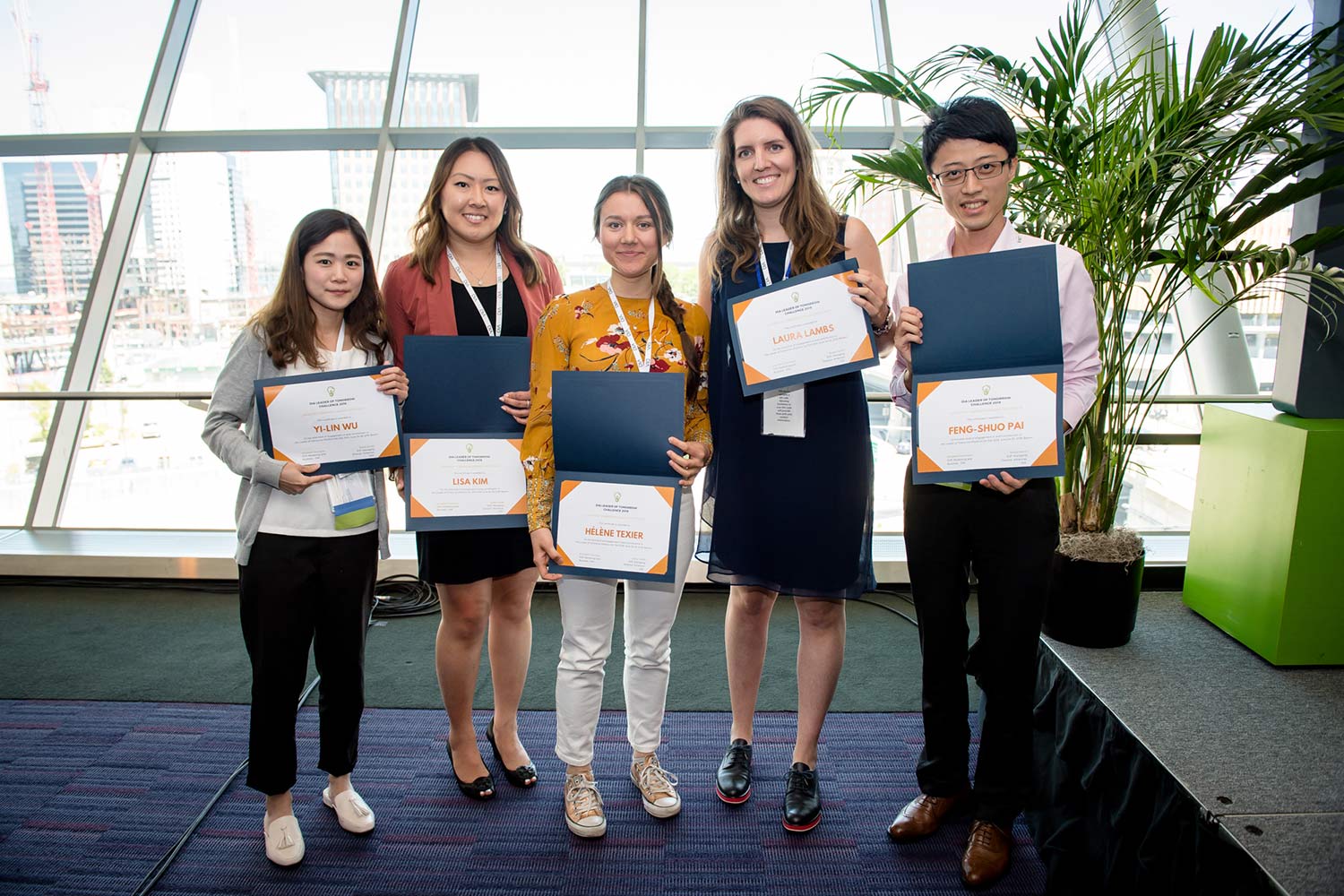
Left to right: Yi-Lin Wu, Lisa Kim, Hélène Texier, Laura Lambs, Feng-Shuo Pai
We Are DIA
What Will the Pharma World Look Like in 2050?
What Role Will You Play as the Next Generation of Pharma Professionals?
Laura Lambs
Business Development Associate, ProductLife Group
e live in a time of rapid change when services and products sometimes become obsolete overnight. It is a rather tricky thing to predict what the pharma world will look like in 2050. What new career opportunities will there be, and what roles and responsibilities will be in store for us? Many questions currently remain without concrete answers.
The pharmaceutical industry is relatively mature, and major players are currently well known. But if we reflect on the past, it was apothecaries that used to prepare and sell drugs. With the “industrialization age” came professionals producing significantly higher quantity of products which we now commonly refer to Pharma. And what will the future bring? Will we even use “drugs”?
We Are DIA
2018 Student Poster Award Winners
2018 Student Poster Award Winners
1st Place
Disparities Between FDA and EMA Regulatory Review Processes
2nd Place
Like We Have a Choice: A Qualitative Study of Patients’ Views on Epoietin Biosimilars for Anemia of Chronic Kidney Disease
3rd Place
Assessment of the United States REMS Program Requirements for NDAs and BLAs
1st Place
Disparities Between FDA and EMA Regulatory Review Processes
2nd Place
Like We Have a Choice: A Qualitative Study of Patients’ Views on Epoietin Biosimilars for Anemia of Chronic Kidney Disease
3rd Place
Assessment of the United States REMS Program Requirements for NDAs and BLAs

Thanks for reading our August 2018 Issue!



